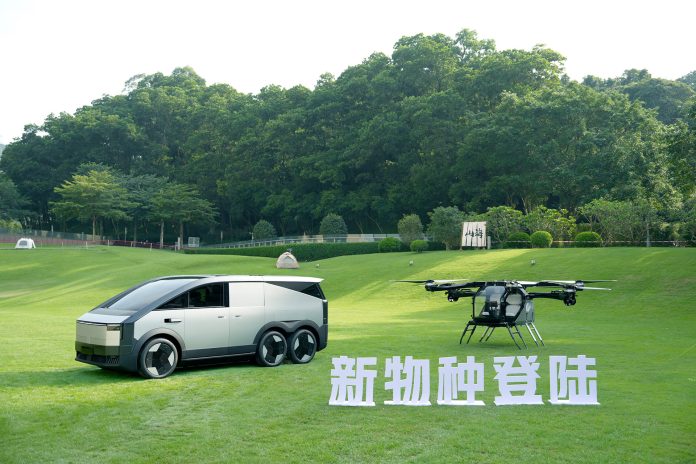Earlier this month, XPENG AEROHT, the largest flying car company in Asia and a subsidiary of XPENG Motors, unveiled its modular flying car—the “Land Aircraft Carrier”—in Guangzhou. This preview event marked the first public appearance of the vehicle, which aims to combine the convenience of ground mobility with the freedom of low-altitude flight. Attendees witnessed the air module in action, offering a demonstration of vertical takeoff, aerial maneuvers, and a smooth landing. XPENG AEROHT’s founder, Zhao Deli, also provided an overview of the company’s progress, mission, and future goals. The modular flying car is expected to have its first manned flight in November at the China Airshow in Zhuhai, followed by a showcase at the Guangzhou International Auto Show, with pre-sales slated to begin by the end of the year.
A closer look at the “Land Aircraft Carrier”
The modular “Land Aircraft Carrier” represents the next step in personal transportation. At 5.5 meters long, 2 meters wide, and 2 meters high, it fits into a standard parking spot and can be driven with a Class C license. What sets it apart, however, is its modular design—consisting of two separate components: a ground module (the “mothership”) and an air module.
Ground module: The Mothership
The ground module features a robust six-wheel, three-axle design with 6×6 all-wheel drive and rear-wheel steering. This setup offers impressive off-road capability, making it suitable for a variety of terrains. The mothership is also designed to store the air module securely in its large trunk while still providing a spacious four-seat interior.
One of the vehicle’s most striking features is its design. With its minimalist, cyber-mech aesthetic, it evokes a futuristic vision reminiscent of science fiction. The continuous “galaxy parabola” contour line runs from the headlights to the roof, giving the vehicle a sleek, unified appearance. Double-hinged doors and a semi-transparent glass trunk allow the air module to remain visible when stored, further emphasizing the blend of cutting-edge technology with daily life.
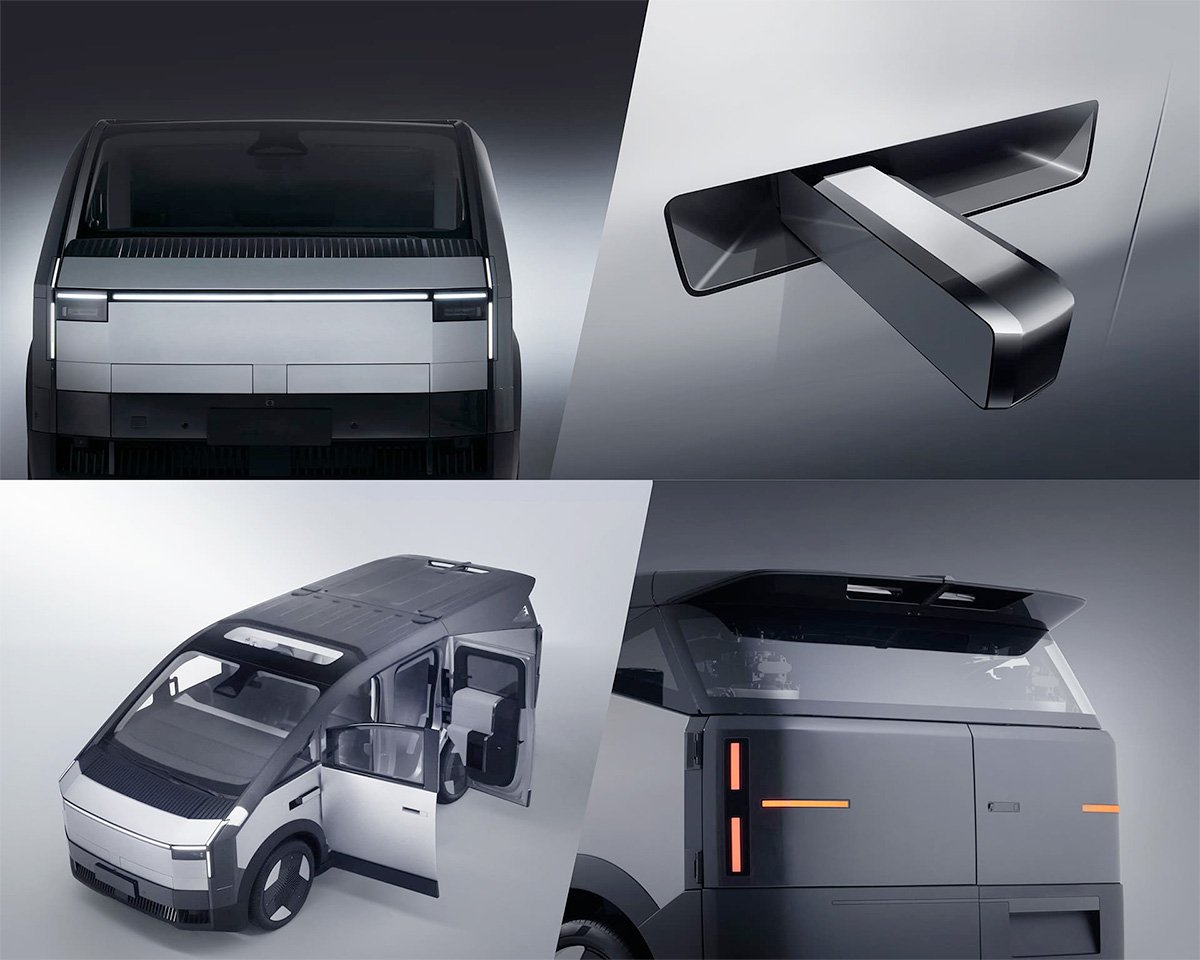
Air module: A revolution in personal flight
The air module is a standout feature of the “Land Aircraft Carrier.” Its six-axis, six-propeller dual-ducted fan design, constructed primarily from carbon fiber, offers both strength and lightweight performance. This, combined with a 270° panoramic cockpit, ensures not only a structurally sound build but also a wide field of view for passengers.
What makes the air module particularly unique is its ability to connect and disconnect from the ground module autonomously. The automatic separation and reconnection system allows for seamless transitions between ground and air travel. When the air module is in flight mode, its arms and propellers unfold, ready for low-altitude flight. Once the module lands, these components fold back in, and the ground module autonomously reconnects, ensuring smooth operation even without human intervention.
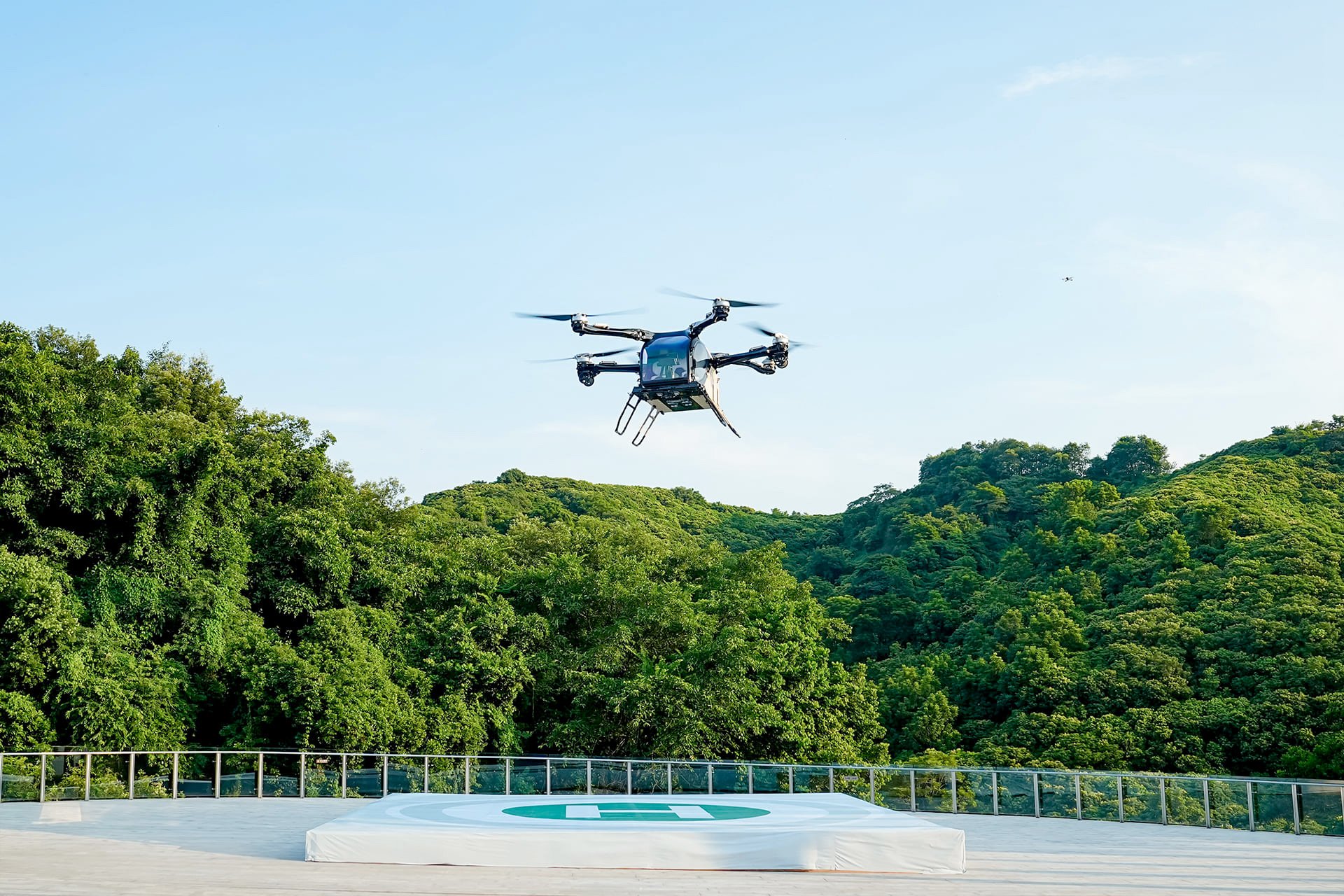
This modular design addresses two major challenges that traditional aircraft face: mobility and storage. The ground module functions not only as a transportation platform but also as a storage and energy replenishment station, allowing users to alternate between driving and flying with ease.
Power and performance: The backbone of the “Land Aircraft Carrier”
Both the ground and air modules of the “Land Aircraft Carrier” are equipped with advanced power technologies. The ground module boasts the world’s first 800V silicon carbide extended-range powertrain, enabling a combined range of over 1000 kilometers. This range easily accommodates long-distance travel, making it a suitable option for road trips and extended commutes.
The mothership also acts as a “mobile supercharging station,” offering high-power energy replenishment to the air module while on the move or parked. This setup allows for up to six flights on a full tank of fuel and battery charge, ensuring that users can experience a mixture of ground travel and flight without worrying about running out of power.
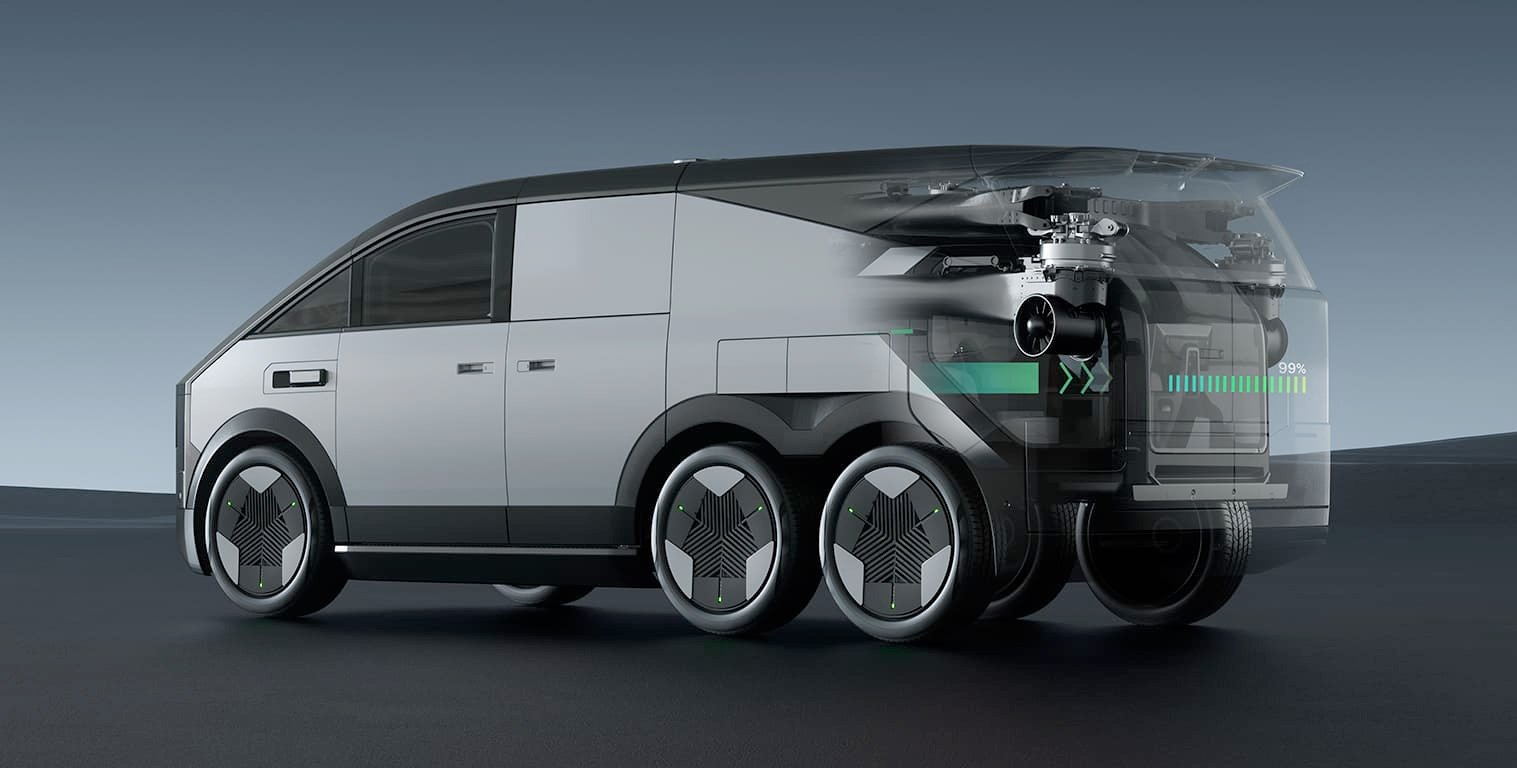
On the air module side, the 800V silicon carbide high-voltage platform drives its flight battery, electric motor, ducted fans, and compressors. This system ensures low energy consumption and faster charging times, which are crucial for the seamless integration of flight into everyday life.
Intelligent aerial driving: Simple and safe
One of the key innovations that XPENG AEROHT brings to the “Land Aircraft Carrier” is the simplification of aerial navigation. Traditional aircraft require complex controls and training, making flying a steep learning curve for the average person. In contrast, the air module of the “Land Aircraft Carrier” introduces a single-lever control system, which allows users to operate the aircraft with one hand. XPENG AEROHT claims that this control system can be mastered in just five minutes and that users can become proficient within three hours.
For those who prefer a more hands-off approach, the air module also supports fully autonomous flight. Features include one-touch takeoff and landing, automatic flight path planning, and autonomous obstacle avoidance. The vehicle is equipped with advanced aerial perception systems, ensuring that it can safely navigate various environments.
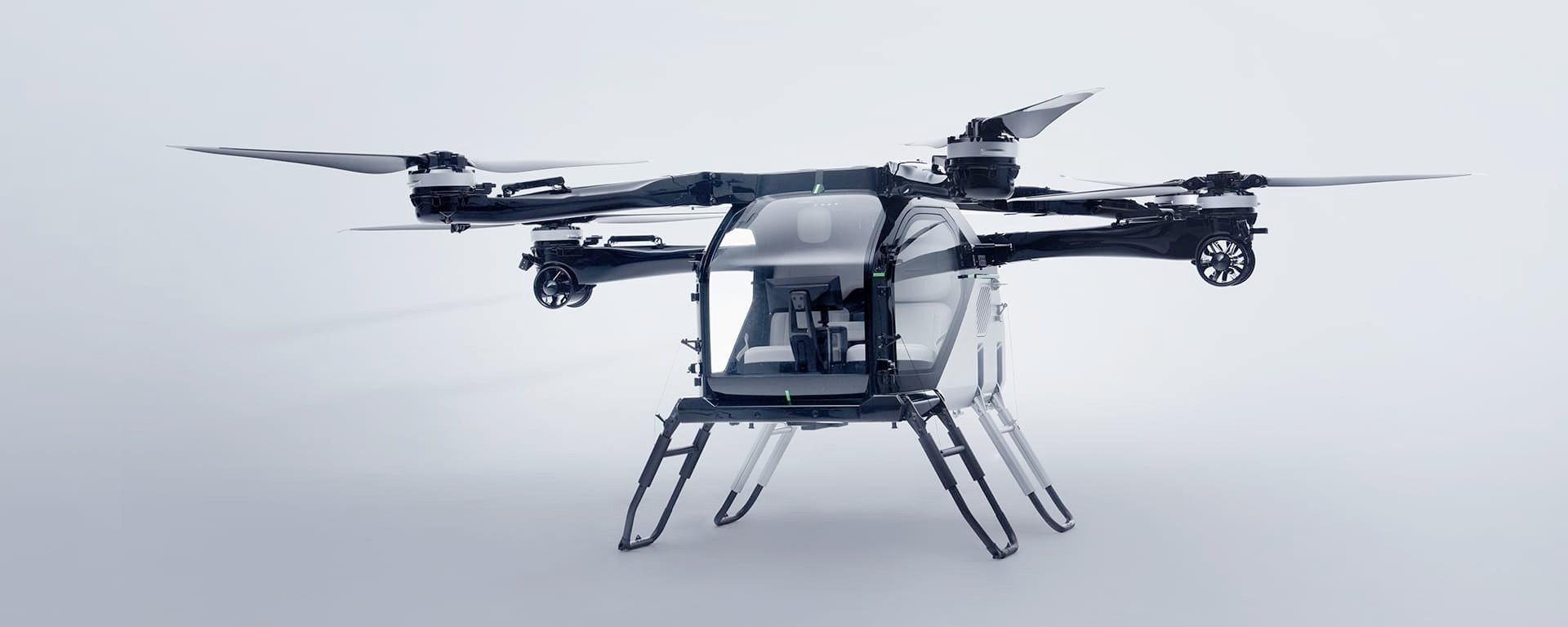
In terms of safety, the air module’s full redundancy design includes backup systems for all key functions, such as flight control, power, communication, and navigation. If a primary system fails, the secondary system takes over, minimizing the risk of a catastrophic failure. Additionally, XPENG AEROHT’s triple-redundant flight control and navigation system uses different hardware and software to reduce the impact of single-point failures, further enhancing overall safety.
Testing and scaling up: Ensuring safety in numbers
Safety remains a primary focus for XPENG AEROHT as the company scales up production of the “Land Aircraft Carrier.” To date, the company has committed to deploying over 200 air modules for extensive safety testing. These tests will include everything from single-point failure assessments for critical systems, such as rotors and batteries, to extreme condition performance trials at high altitudes and varying temperatures.
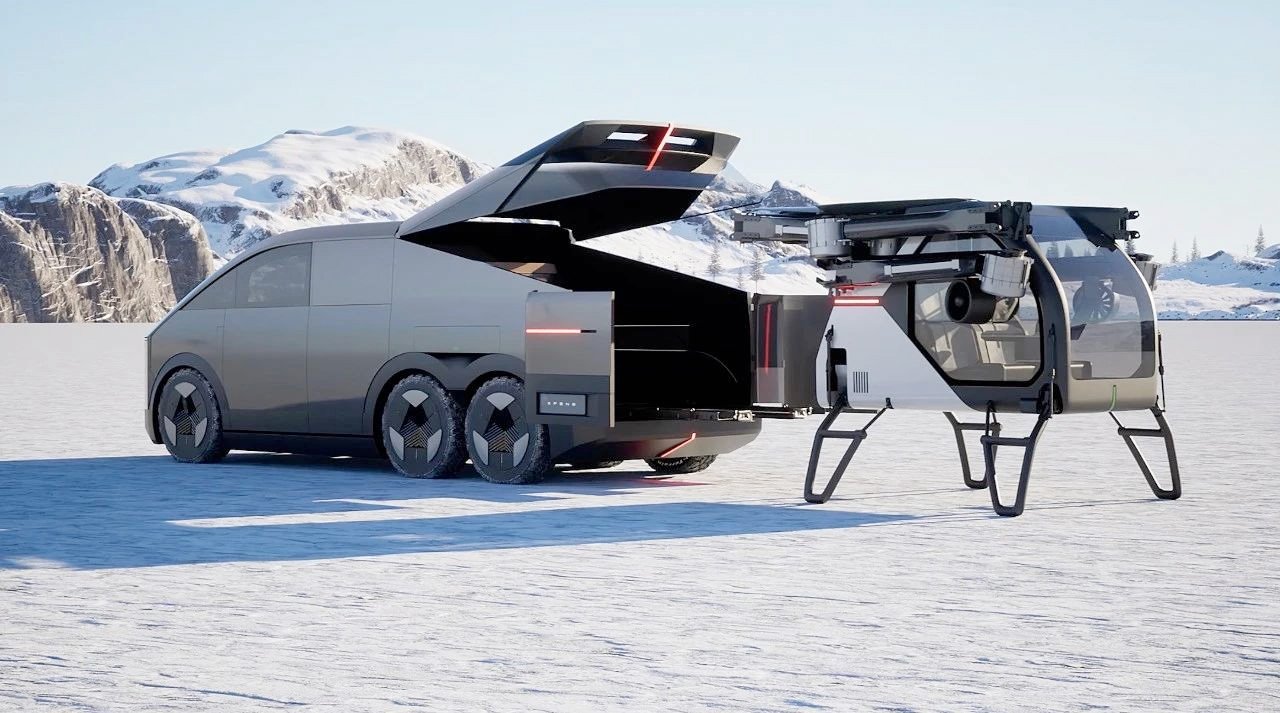
XPENG AEROHT aims to ensure that the “Land Aircraft Carrier” meets rigorous safety standards before it becomes widely available to consumers. This commitment to safety is seen as essential for building public trust in the concept of flying cars, which many view as a futuristic but potentially risky form of transportation.
Expanding the flying car experience
As part of its commercialization strategy, XPENG AEROHT is working with partners to create an infrastructure that will make flying cars more accessible to the public. To this end, the company has already finalized agreements with over 70 flying camps across key cities in China. These camps are designed to provide a safe environment for users to experience flying cars, whether for leisure or practical purposes. XPENG AEROHT plans to extend this network to over 200 camps by the end of the year, with the goal of ensuring that most users can reach a flying camp within a 30-minute drive.
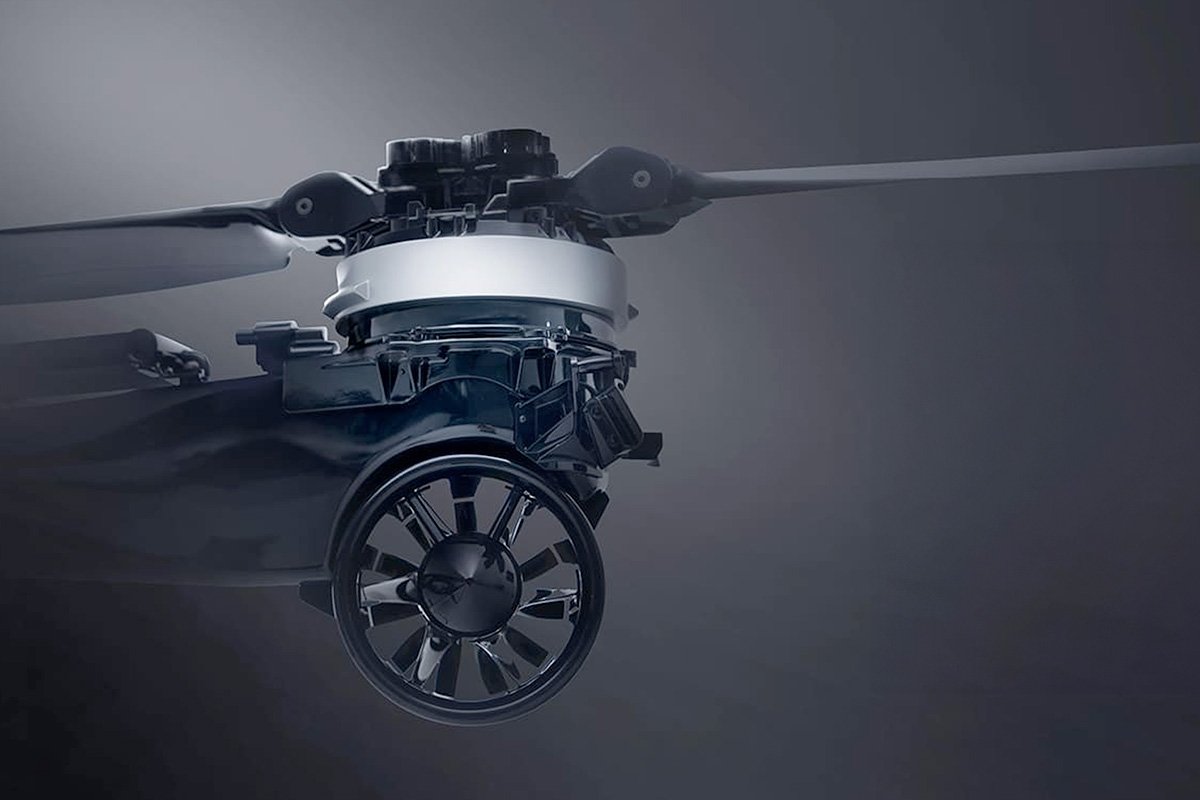
This strategy underscores XPENG AEROHT’s broader vision of turning aerial mobility into an everyday reality. In the future, flying camps will likely be integrated into popular travel routes, enabling spontaneous aerial adventures. Self-driving vacations could soon include flight as a key component, allowing users to explore scenic landscapes from both the ground and the air.
The potential for flying cars extends beyond personal travel, too. XPENG AEROHT envisions the “Land Aircraft Carrier” playing a role in public services, including emergency medical rescues, obstacle navigation, and high-rise evacuations. The flexibility of the modular design makes it well-suited for a wide range of use cases, from leisure activities to critical services.
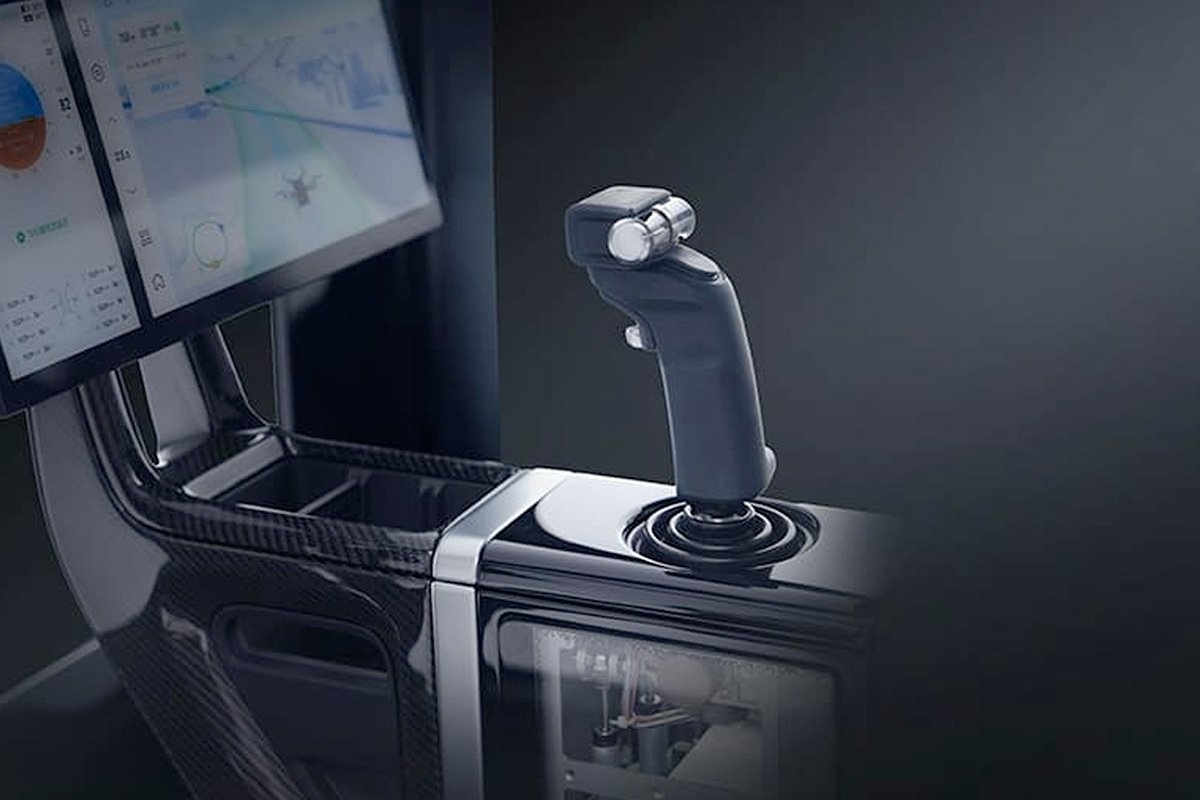
XPENG AEROHT’s vision: The Three-Step strategy
XPENG AEROHT has outlined a clear roadmap for the future of flying cars, which it calls the “Three-Step” product strategy.
- Step One focuses on the introduction of the “Land Aircraft Carrier” and its initial applications in restricted flying environments and public services. By scaling production and sales, XPENG AEROHT hopes to validate the commercial viability of flying cars while fostering the development of the low-altitude flight ecosystem.
- Step Two involves launching a high-speed, long-range eVTOL (electric vertical takeoff and landing) aircraft to address air mobility challenges in urban commuting scenarios. This phase will also see XPENG AEROHT collaborating with partners to build the infrastructure necessary for urban 3D transportation systems.
- Step Three is the realization of fully integrated land-air flying cars capable of door-to-door, point-to-point transportation. This vision of 3D urban mobility could significantly transform how people navigate cities, potentially alleviating congestion and reducing travel times.
Between the first and second steps, XPENG AEROHT plans to develop derivative products from both the land and air modules of the “Land Aircraft Carrier,” aiming to cater to a wide range of user experiences and public service needs.
Source: XPENG AEROHT

